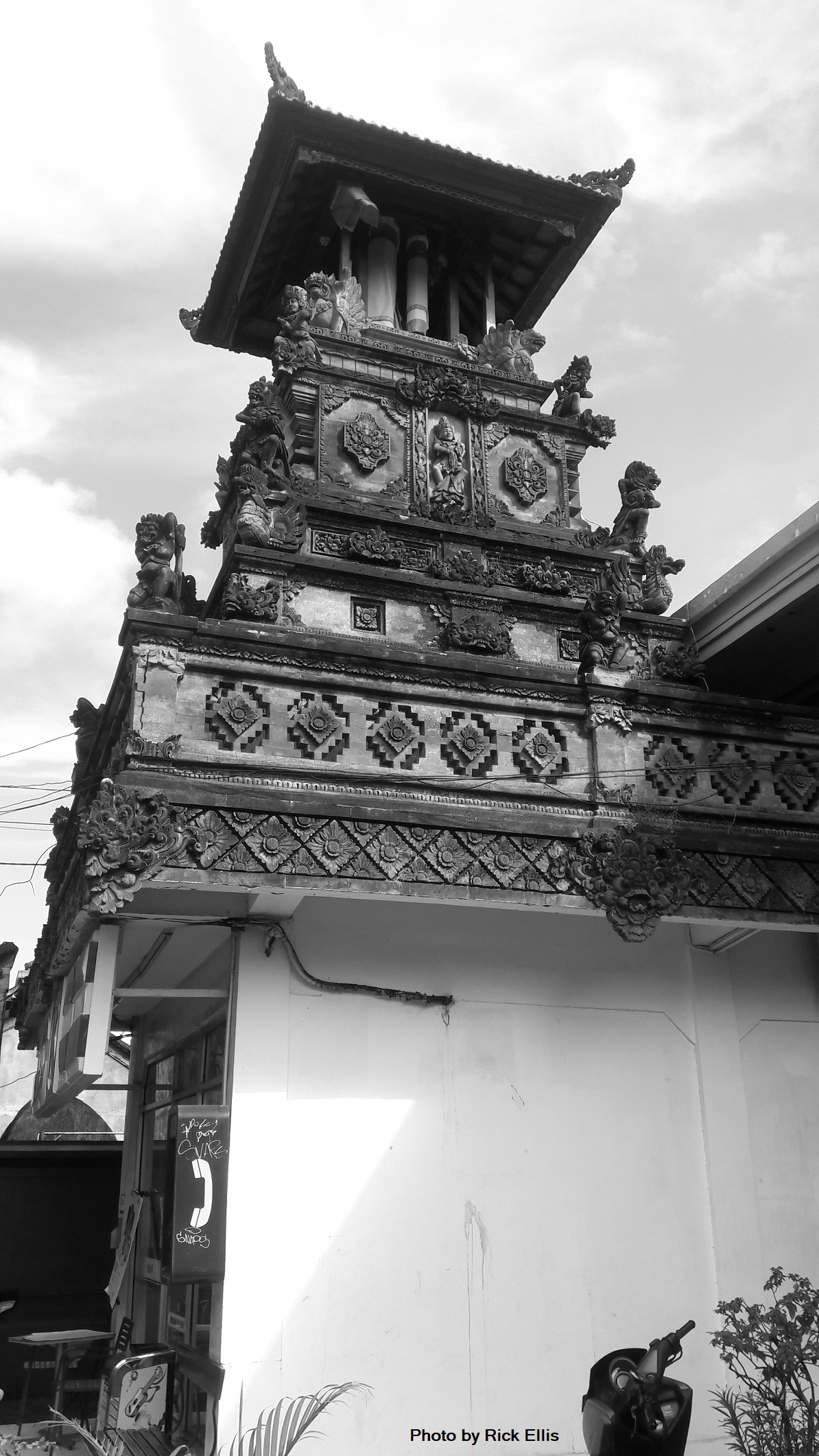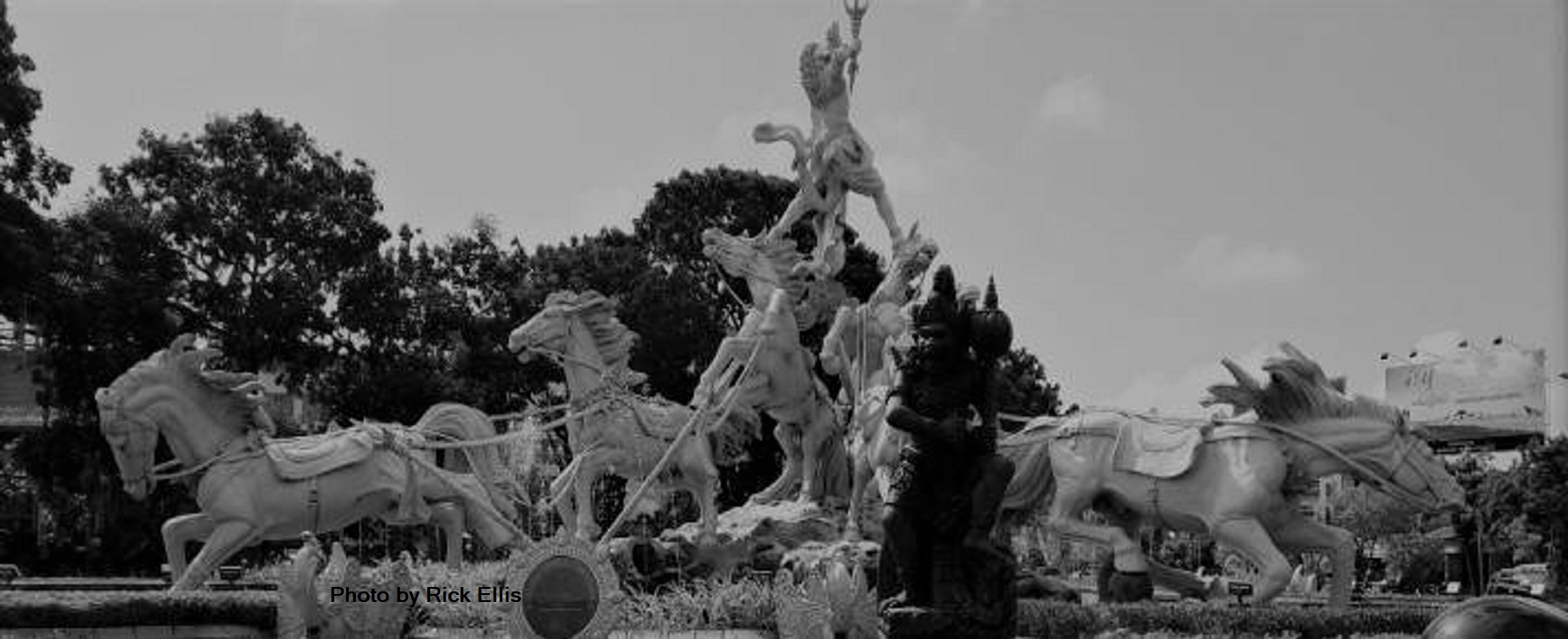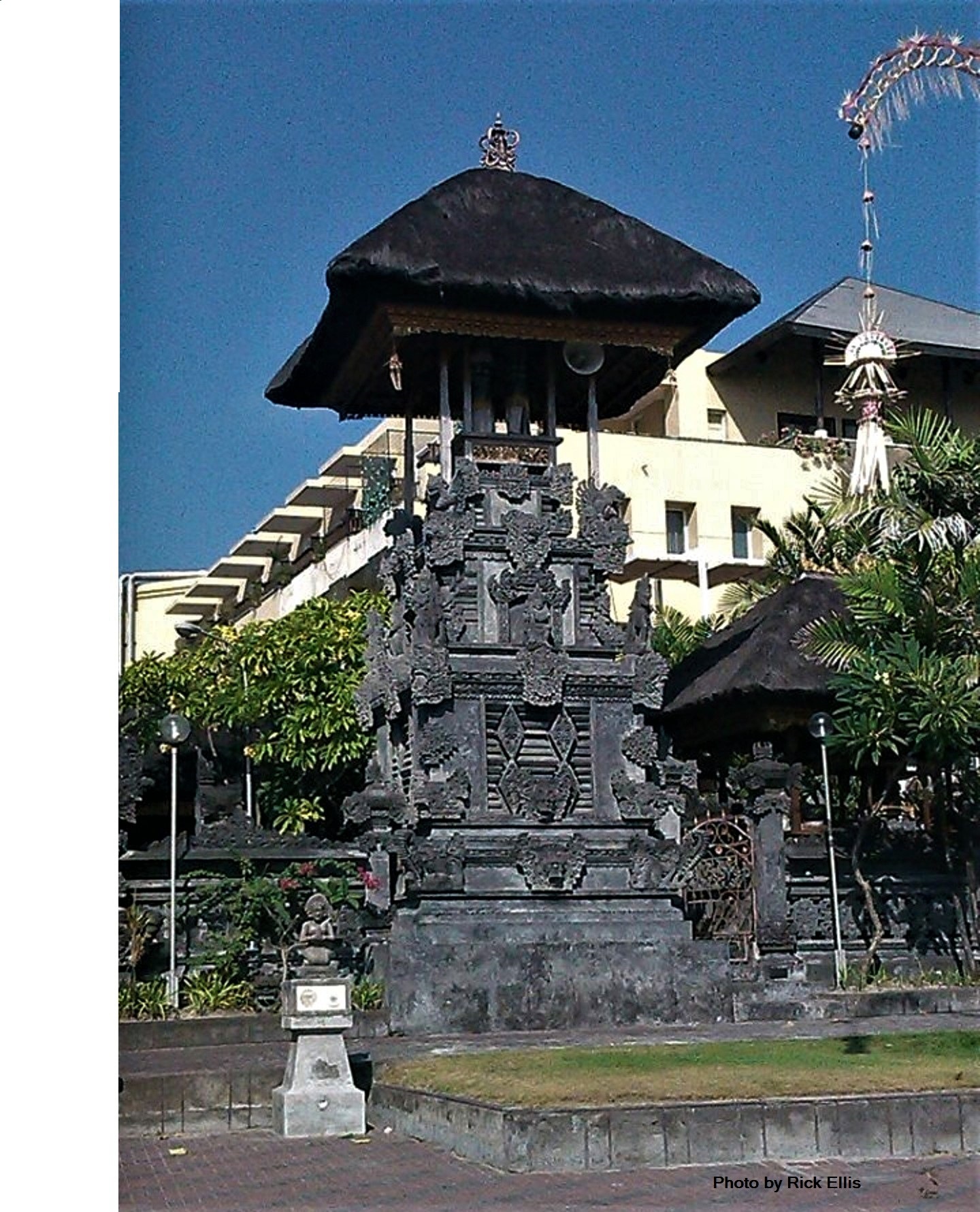In the first two articles we looked at the details of arranging your Do-It-Yourself Bali trip, so next up is: “What’s it really like when you get there?” Here are a few choice tidbits for the first-time Vietnamese traveller that highlight the similarities and differences.
I’ve walked this stretch of Jalan Legian (Jalan means street in Indonesian) hundreds of times over the years.
It runs from the infamously messy ‘intersection” at the corner of Jalan Legian and Melasti where the latter becomes Sriwijaya heading towards Denpasar, the capital city of Bali, and Legian carries on northward to Jalan Padma and beyond towards Seminyak.
It’s more of a free-for-all than a genuine intersection, much like in Vietnam, with each vehicle proceeding as if alone on the road only to discover everyone else using the same approach. There must be some hidden logic to it all because I’ve never seen an accident there.
Sound familiar? Yes, Bali is in a developing country just like Vietnam, so there are plenty of uneven sidewalks, motorbikes flying along in the wrong direction, traffic mayhem, and general commotion to make you feel at home at all times.
There is the usual Asian labyrinth of wires and cables strung up all over the place, dangling down, with a few transformers mounted precariously above the sidewalks. Every now and then one of the transformers blows up with a loud bang, instantly darkening the area and drawing crowds to see the sparks fly and await the repair crew, which appears very quickly and works efficiently to restore power.
The intriguing part among all that electrical equipment is an intricate set of traffic signals. There is the standard green/amber/red variety mounted on steel poles at each of the four corners, nothing special there.
But then, low and behold, there are two large electric signs mounted on poles with numerical digital displays facing each direction on Jalan Legian that look as if they’re equipped to count down the remaining time until the light turns green.
Not once during all those trips past the intersection have I seen any of those signals functioning except a red light flashing from time to time, which is of no use because everyone just keeps going until forced to yield.
I think the Balinese turn on that flashing light every few months just to let us know they’re on the job and all this has a grand schedule for implementation. Must be, since this charade has been going on for several years. We can therefore conclude either there is no plan to switch on those lights or it’s a very long staged-in effort that could require many years.
I’d go with the latter given the mysterious flow of progress in developing countries, especially on Bali, certainly very near the top of the list of destinations with mysterious rates of progress. In Vietnam, decisions often come slowly, but once made, the related solutions are quickly implemented. Not so on Bali mainly because locals see no need to hurry, and maybe they’re right after all.
Here this famous intersection comes to life:
While the Balinese embrace the latest technology and reap the benefits of modernization, they’re not giving an inch when it comes to compromising on culture and customs. No chance. And that alone is the unparalleled and unique beauty of the island: no fast-food version of things, no cutting corners, no putting on staged displays of long-forgotten culture.
There are no old and obsolete folk tunes replayed ad nauseum, no tacky cultural dances (though admittedly such displays can be found at some prominent temple sites), no phony ceremonies, nor any diluted versions of local food prepared just to please the tourists. It’s real and authentic all the way, an all-encompassing lifestyle, a recipe and a road map for living, not obscure or surreal concepts and theories.
Now wander along Jalan Legian in the direction of Seminyak and you’ll see my favourite symbol of the battle between progress and Balinese culture. Balinese culture is winning and will always win, but there are challenges along the way. There stands the most interesting structure I’ve ever seen on Bali, and that’s saying a lot given the 20,000 temples and shrines all over the island.
This unforgettable sight is a Circle K minimart with a shrine on top of it the size of the shop itself:
|
|
The shrine is the home of the South Legian village bell, which is used to advise constituents of social activities, anniversaries, deaths, ceremonies, town hall meetings, and any fire emergencies that arise. Of course they have modern fire trucks, but if the special alarm tune rings signifying a fire, everyone shows up with pails of water, at least so I’m told.
The activities are scheduled using several Balinese calendars, one with 7 months of 30 days each, the other a lunar-oriented affair used to determine ceremonial days and the related festivals. The third dimension which I define as “activities” fits into each week. The weeks vary from 1 to 10 days in length. And, of course, the Gregorian calendar is also used for business and international transactions.
Baffled? So am I.
It’s significant that the neighbourhood retains the shrine atop the minimart in its original form performing its authentic functions. That pretty much sums up the way things work: modern things conform to the Balinese lifestyle, never the other way around.
A short clip on this architectural feat:
This beautiful little chunk of this world is by no means an exception on Bali. Indeed, the visitor is enveloped with culture including dresses, food, architecture, and music from the moment you touch down at Denpasar airport, which resembles an enormous Hindu temple with an aviation terminal inside.
Upon exiting the airport there is a traffic light that is finally operational after years of sitting idle, beside it is a breathtaking statue depicting a mythological battle scene featuring the legendary knight Ghatotkacha.
It sure beats a sign pointing to the nearest freeway and fast-food joints.
|
|
| Ghatotkacha Statue near the airport |
You can hardly pass a building without noticing the architecture and building design, the detail in the carved brick walls, and gargoyles warding off evil spirits placed at all strategic points.
|
|
| Wall-to-wall temples and shrines |
Back on Jalan Legian you’ll see the usual string of tacky souvenir shops, the staff looking bored due to uber-tourism - such is the price of popularity. A couple of the shops do stick out from the crowd: one offers “100% Genuine Fake Goods," another promises “No Bullshit Here," yet another “Fixed prices! No negotiating!”
There’s plenty of tourist shtick resembling any big global destination these days: offers for massage, shopping, motorbike taxis, Viagra, random goods stored in a bag balanced on vendors’ heads, hair-braiding, and tattoos.
The streets and sidewalks are often a mess with vendors and goods spread all over, the vendors hogging the path and hounding customers. In Vietnam the vendors are passive, goods usually displayed without fanfare, but on Bali the vendors hustle for our business.
In many ways a visitor feels the same old-style retro vibe that permeates in Vietnam. Progress is underway while tradition isn’t quite ready to yield. But there is one notable difference: in Vietnam retail transactions are approached with a sense of urgency but that’s not the case on Bali. Things move a lot slower and it takes time getting used to.
When a ceremony calls for it, the entire main street is shut down for hours to celebrate a newborn, anniversary, or to commemorate a death. Once a year on New Year’s Day in March the whole island goes quiet, no flights in or out, no checking in or out of hotels, no outdoor activity whatsoever, with tourists sequestered in hotels for those 24 hours. Locals and foreigners alike participate and neighbourhood patrols strictly enforce the peace.
That day is called “Nyepi," and it begins several days before new year actually arrives with elaborate costumes, colourful processions, and everyone has a grand time while completely clogging all roads. Everyone and Mother Nature have a quiet day to relax and reboot before starting the new year.
It’s like night and day from Tet!
Heading down Padma toward the beach I’m reminded that the height of no building may exceed the tallest of trees on Bali, that being 5 or 6 stories depending on how you count and the mood of the building inspector on a given day.
Just when I think I have Bali all figured out, I bump into a little girl about 6 years old next door from where I stay. I rattled off a few questions without speaking slowly or dumbing down my English - I don’t know why - just happened. We’re so used to speaking pidgin English that it becomes second nature to ignore grammar and pronunciation rules in favour of what will be most easily grasped by locals.
Much to my surprise she rattled off the answers in unaccented English just as quickly as I asked them. Makes me wonder how much the future will impact coming generations and the Balinese way of life. After all, this society has practically been unchanged for centuries, and that’s much of its allure.
I bet in 20 years that damned stoplight will still just blink a few times per year, a gentle reminder of who is really running the show on Bali.






















































